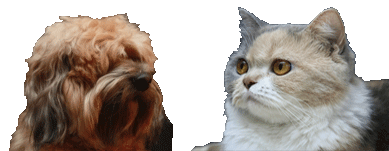Information about the Bloodhound
The Bloodhound (also known as the St. Hubert hound and Sleuth Hound) is a large breed of dog which, while originally bred to hunt deer and wild boar, was later bred specifically to track human beings. It is a scenthound, tracking by smell, as opposed to a sighthound, which tracks using vision. It is famed for its ability to discern human odors even days later, over great distances, even across water. Its extraordinarily keen sense of smell is combined with a strong and tenacious tracking instinct, producing the ideal scent hound, and it is used by police and law enforcement all over the world to track escaped prisoners, missing people, lost children and lost pets.
Bloodhounds weigh from 33 to 50 kg (80 to 110 lbs), although some individuals can weigh as much as 72 kg (160 lb). They stand 58 to 69 cm (23 to 27 inches) high at the withers. Bloodhounds have a life of about 9-11 years. According to the AKC standard of the breed, larger dogs are to be preferred by conformation judges. The acceptable colors for Bloodhounds are black, liver, tan, or red. Bloodhounds possess an unusually large skeletal structure with most of their weight concentrated in their bones, which are very thick for their length. The coat typical for a scenthound is hard and composed of fur alone, with no admixture of hair.
This breed is a gentle yet tireless dog when following a scent. Because of its strong tracking instinct, it can be willful and somewhat difficult to obedience train. Bloodhounds have an affectionate and even-tempered nature, making excellent family pets. However, like any large breed, they require supervision when around small children.
Compared to other purebred dogs, Bloodhounds have an unusually high rate of gastrointestinal ailments, with bloat being the most common type of gastrointestinal problem. The breed also suffers an unusually high incidence of eye, skin, and ear ailments; thus these areas should be inspected frequently for signs of developing problems. Owners should be especially aware of the signs of bloat, which is both the most common illness and the leading cause of death of Bloodhounds. To minimize bloat the owner should feed a Bloodhound at least an hour before or after exercise and place food and water in a raised feeder. The thick coat gives the breed the tendency to overheat quickly.
Bloodhounds in a 2004 UK Kennel Club survey had a median longevity of 6.75 years, which makes them one of the shortest-lived of dog breeds. The oldest of the 82 deceased dogs in the survey died at the age of 12.1 years. Bloat took 34% of the animals, making it the most common cause of death in Bloodhounds. The second leading cause of death in the study was cancer, at 27%; this percentage is similar to other breeds, but the median age of death was unusually young (median of about 8 years).
[Back]

